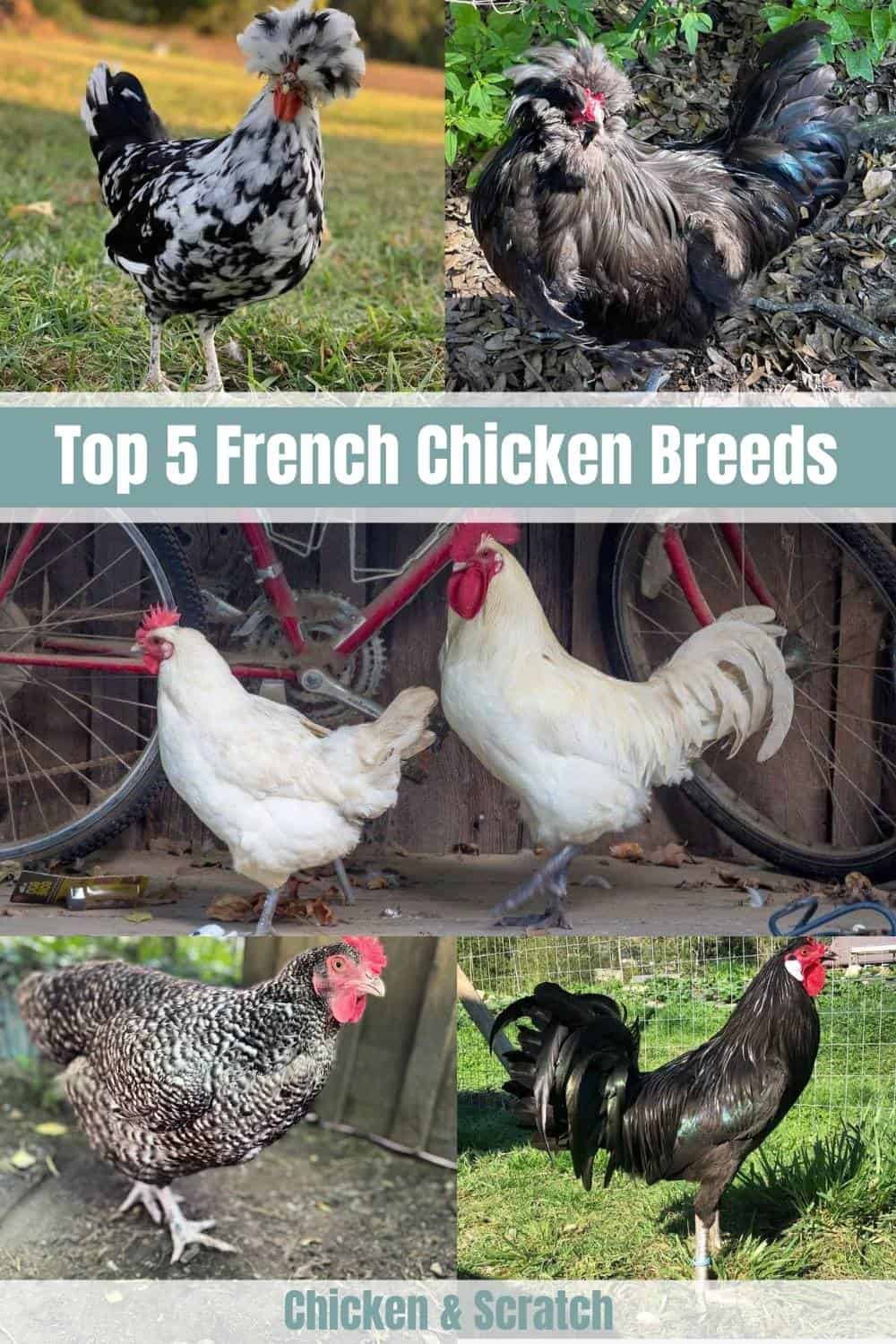You don’t have to limit yourself to raising the chicken breeds common to your locality. There are various breeds across the globe, and you can add any of them to your flock. For instance, French chicken breeds are noted for their flavorful meat and egg production. Below are some French chicken breeds you can raise.
1. Bresse Chicken
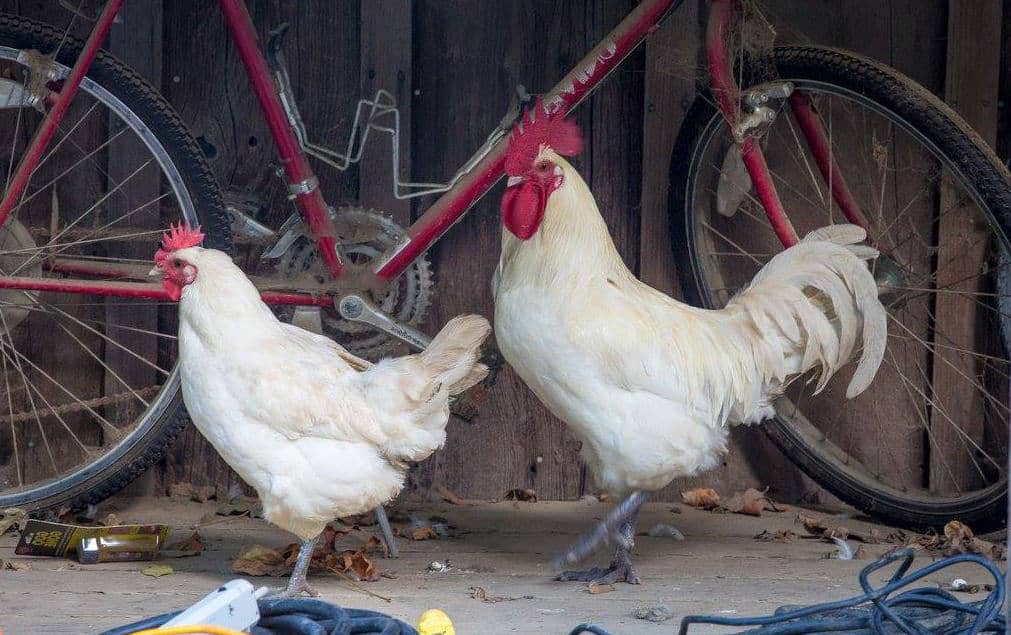
History
Also known as Poulet de Bresse, the Bresse is considered the best chicken globally and raised in Bresse, France. Any chicken breed regarded as Bresse must have been raised in the region.
Therefore, it might be difficult for you to find the Bresse in your locality, as it isn’t common. History has it that local farmers crossed different local breeds to create the Bresse chicken breed in Bresse, which is near the Rhone River.
Profile
As regards its appearance, the Bresse is striking. It is white with blue legs and a single comb. It comes in other colors such as black, blue, red, etc. The White variety is the most popular because many people see it as representative of France’s national flag.
Besides, it weighs 6 pounds, which is more than other varieties which weigh less. The Bresse’s skin is thin, but it is regarded as the most flavourful chicken globally. Many people have come to associate a unique, delicious taste with the Bresse.
It has a distinct quality that makes its metabolism work for fat, flavor, and growth. It isn’t a cheap chicken breed; you have to spend more money to get it either for meat or egg production.
The hens mature early and are good layers. They lay about 250 cream-colored eggs per year. However, many breeders raise them for their delicious meat more often. Also, You’ll find the Bresse moving in a flock of its counterparts.
It performs at its best when they’re in one another’s company. It loves foraging and doesn’t do well with confinement. However, it doesn’t like to be handled. It would rather be left alone.
Since the Bresse is exported worldwide, it is susceptible to common poultry diseases, especially those common to a location. As such, vaccinate them as and when due and provide them with a quality feed. Ensure you provide them enough space to forage as well. Read more about Bresse Chicken.
2. Houdan Chicken
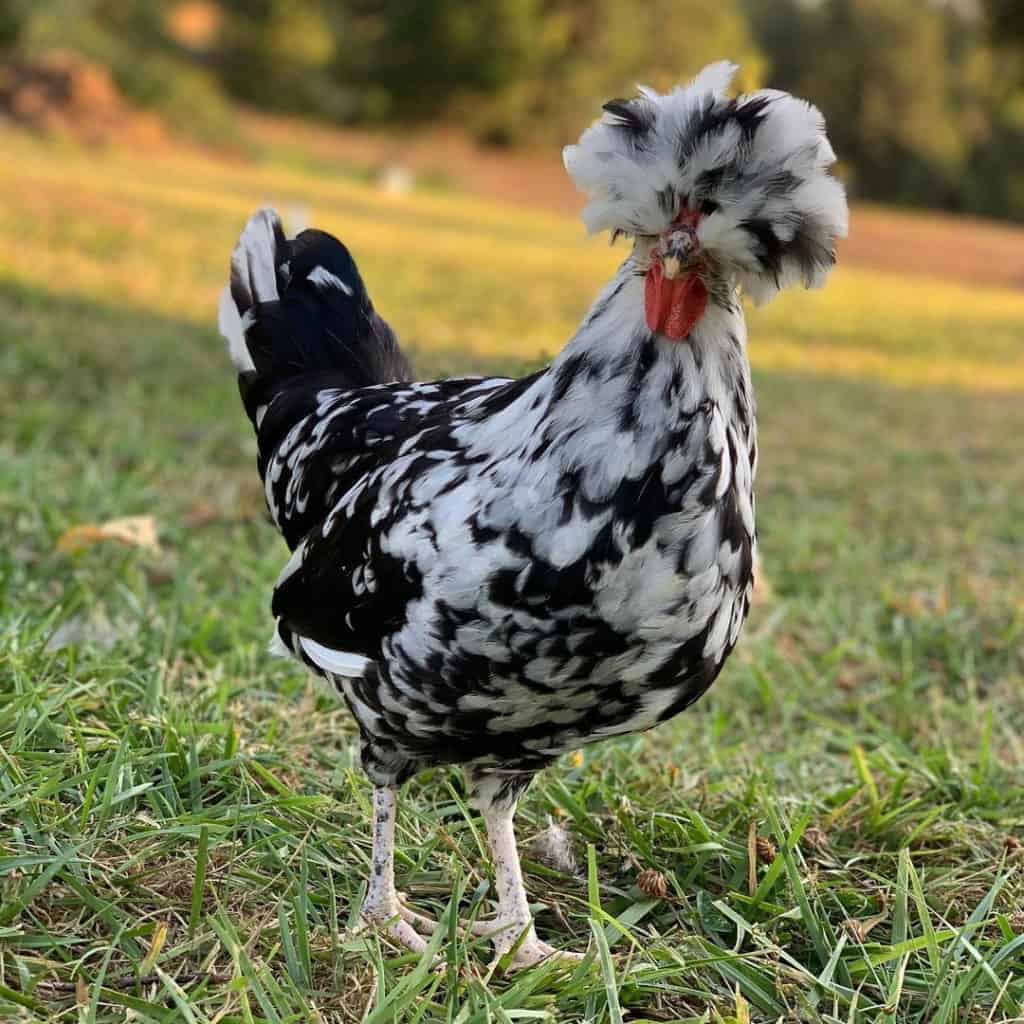
History
Named after a village in Yvelines, France, the Houdans are famous for egg and meat production. The American Poultry Association recognized them as a standard breed in 1874. They are thought to be creations of the Dorking, Polish, and Crevecoeur.
Profile
Houdans are full-crested and bearded, medium-sized birds with five toes on their feet. They are of 2 varieties: Mottled and White. They have small earlobes and wattles and a single red, V-shaped comb.
Their legs are pale-colored, and their bodies elongated. They have a distinct appearance from other chickens. They lay about 180 white or cream-colored eggs per year. Depending on their nutrition, their eggs can either be small or big. Although they’re good layers, they’re primarily raised for meat and ornamental purposes.
Concerning their personality, Houdans are lovely to handle. They aren’t aggressive and love human contact a lot. Children are safe around them. Except a predator is lurking around somewhere, they are calm and not easily flustered.
You don’t have to worry about disturbing your neighbors if you raise them as backyard chickens. They’re naturally broody and easy to sustain. However, they sometimes attempt to sit on more eggs than they lay and break the eggs in the process. You’ve to avoid this by inspecting them when they’re incubating. They’ve no problem with being confined for long as well.
Even though they don’t need special attention, try to keep their coop clean always. A dirty pen makes it easier for mice to invade their beards and crests. They aren’t cold-hardy but heat-tolerant.
As such, you need to pay close attention to them in cold seasons. Also, if you plan to raise Houdan roosters, provide them with a large flock of hens to fertilize eggs. Their feed must be of high quality if you want them to lay more, healthier eggs. Read more about Houdan Chicken.
3. La Flechè

History
Named after La Flèche in France’s Pays de la Loire region, La Fleches were exported to America in the 1850s and recognized by the American Poultry Association in 1874. La Fleche is a French word that means “the arrow”; the chicken is also called the Devil bird.
Profile
La Fleches have V-shaped tails that look like animal horns; as such, they’re nicknamed Devil birds. They come in only one variety which is Black. They have large earlobes, made more prominent by their black color. Even though their tightly-fitted feathers make them seem lightweight, they aren’t. Sometimes, they weigh up to 8 pounds.
They aren’t aggressive but are very careful around humans. They try as much as possible to distance themselves from human relationships. As such, they aren’t the type of chickens you can carry and put on your laps.
They’re active and love free-ranging; they also know how to look out for themselves in cases of danger. However, they don’t mind being confined but won’t allow you to tame them either. If you’re looking for close relationships with your chickens, La Fleches isn’t the right breed for that.
They love to fly and sometimes roost in trees. They aren’t naturally broody, so you need an egg incubator to hatch the eggs if you want them to become chicks. However, they lay large, white eggs. You can get up to 150 eggs from them per year.
In addition, La Fleches are strong and heat-tolerant. They’re not predisposed to any ailments. But you must keep them hydrated during the hot seasons.
While they aren’t cold-hardy, taking measures to prevent them from getting frostbitten will help. They grow slowly and love their space. They’d be happier and healthier if you provide them enough room to free-range, but keep an eye on predators too. Read more about La Flechè.
4. Crevecoeur Chicken
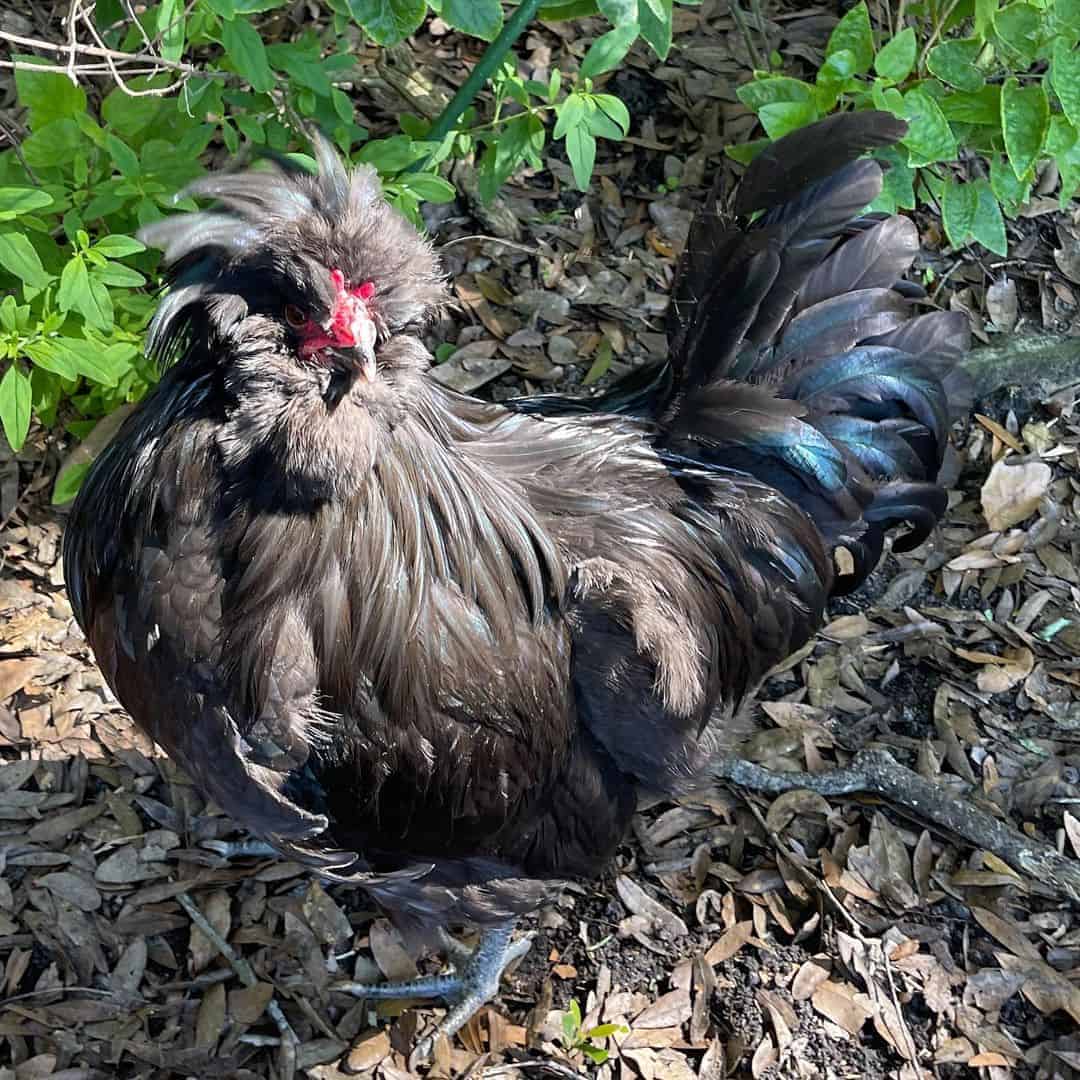
History
Crevecoeurs are bred for meat and showmanship. They were named after the Crevecoeur village in Auge Normandy, France. Due to their rarity, they’re considered critically endangered species. They were admitted by the American Poultry Association in 1874.
Profile
Crevecoeurs come in different varieties, such as black, white, splash, and blue. They’re bearded and crested, similar to the Houdans. You’ll find a green sheen on their beards, crests, and tail, with red or white earlobes depending on the variety. Also, they have horn-like combs with grey legs and blue toes and are large and thick.
They’re not prolific egg layers; you might get 100 eggs or above from them per year if you’re fortunate. Besides, they start laying eggs from 7 months, unlike other chicken breeds. As such, they’re mainly reared for meat.
They aren’t broody but enjoy human attention a lot; you can tame them if you want. They’re docile and friendly, especially when you spend more time with them. You’ll love being around them a lot. They’re active, too; however, they’re quiet and cautious.
They talk and crow a lot, though not in a noisy manner, and act as if they’re always on the lookout for predators. They’ve no problem with being confined and aren’t also particular about foraging. If you find individual chickens who love to forage in your flock, keep an eye on them to avoid predators’ attacks.
Besides, supplement their diet with treats and nutrients like calcium to keep them healthy and increase their egg production. You don’t need to have a large space to keep them but ensure their pen is always clean.
They’re not predisposed to any disease, but you should keep them away from parasites. Trim their face feathers regularly, too, to avoid eye problems. In the right conditions, they live up to 8 years and above. Read more about Crevecoeur Chicken.
5. Coucou de Rennes

History
This chicken breed was created in France in the 1900s in the Rennes region. It was almost at danger of extinction until some breeders took some individual chickens from the flock and raised them separately to continue this line of the chicken breed.
Profile
Coucou de Rennes are chickens with fluffy plumages and a striking appearance. They’re considered critically endangered chickens; however, some breeders are deliberately raising them to ensure the breed is very much available.
Their plumages are tinted with blue, white, and grey colors. They’re white-skinned and usually bred for their tasty meat and showmanship. They’re available in some museums and always a beautiful sight to behold.
They continue to lay eggs into their older years, so you can expect a steady supply of eggs from them. They adapt to both hot and cold seasons. As such, there are fewer chances of them getting diseases during both periods, as long as you adequately care for them.
However, they aren’t sociable. Coucou de Rennes doesn’t want to be handled. They don’t make a lot of noise but aren’t birds that allow close relationships. They love to forage vigorously, making them active. You must provide the space to free-range as much as they want.
Some of the most prominent qualities of these birds are their rustic nature and slow growth. They have to be at least four months old before they’re considered mature enough to be eaten. They lay about 160 eggs or above per year, and their eggs are usually light brown.
Moreover, they are low-maintenance birds. They’re okay with the standard requirements every chicken breed needs to survive. Even though they can survive in cold and hot climates, don’t expose them to excessive heat or cold. Keep them safe from predators and parasites as well. If you’re introducing a different chicken breed to their flock, examine the breed for some time before you mix them. Read more about
3 Tips For Choosing A Chicken Breed
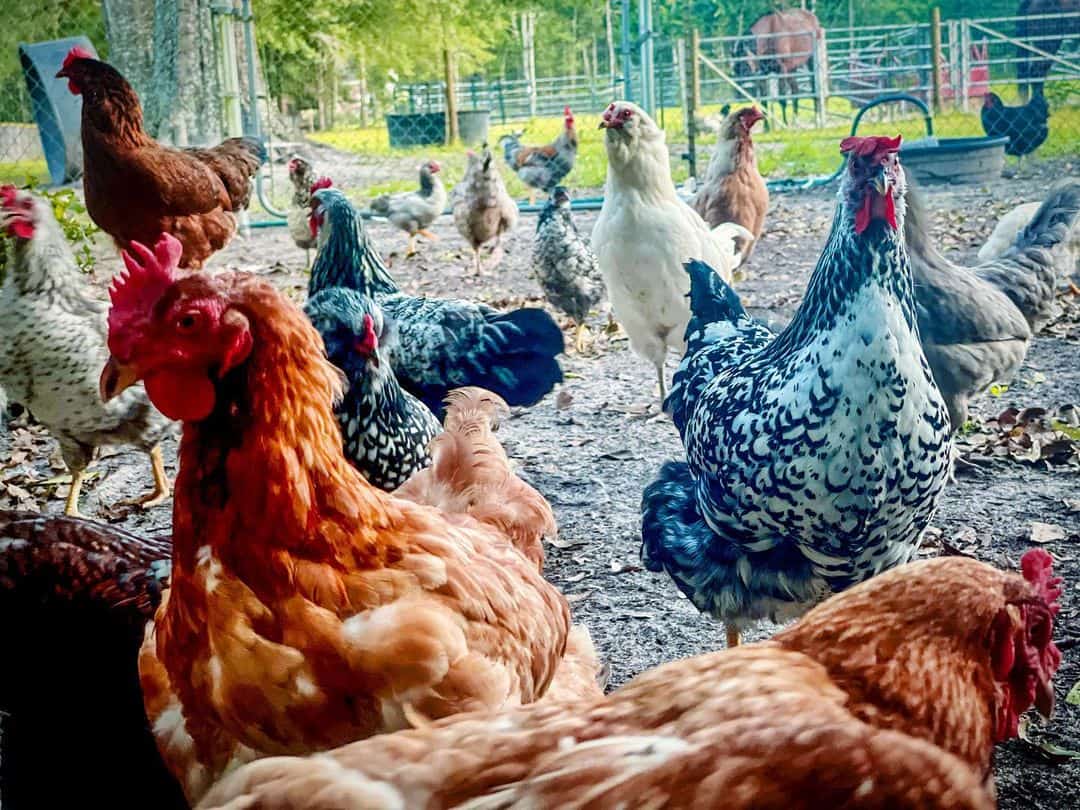
There are no perfect chicken breeds; what makes a chicken breed perfect for you depends on many factors. Below are some of the things to consider when choosing a chicken breed.
Purpose
Why do you want to raise chickens? The answer to this question will guide you to choose the right chicken breed. For instance, if you want to raise chickens for their tasty meat, you should go for chicken breeds like the Bresse, Jersey Giant, Orpingtons, Cornish Cross, etc.
If you want both meat and eggs, dual-purpose chickens such as Buck Eye, Wyandottes, Black Australorp, etc., are good choices. For showmanship, chicken breeds such as Silkie, Cubalaya, Faverolles, etc., are suitable.
If you want eggs, you have to determine how many eggs you want your chickens to lay per year and the color of the eggs. Not all chicken breeds lay the exact amount and size of eggs. Bantam chickens, for example, will lay small eggs compared to standard-sized species. Do your research before you choose any breed.
Lifestyle
How much time do you have to care for your chickens? Your lifestyle also matters when considering which chicken breed to raise. Some species require more attention, while others aren’t suckers for human contact.
Silkies, Cochins, Sultans, Easter Eggers, etc., are breeds that love attention and like being cuddled, while species like Leghorns prefer to be left on their own. If you don’t have much time to spare, go for chicken breeds that only need food, water, and a clean environment to survive.
Temperament
Another factor to consider is the chicken’s temperament. Some breeds are docile and tameable, while some are aggressive and stubborn. For instance, it’ll be difficult for you to tame a Cornish chicken because of its aggressiveness, unlike Brahmas, who are more docile. If you don’t want chickens that’ll peck at your hands while feeding them, go for docile chickens.
5 Tips For Raising Backyard Chickens
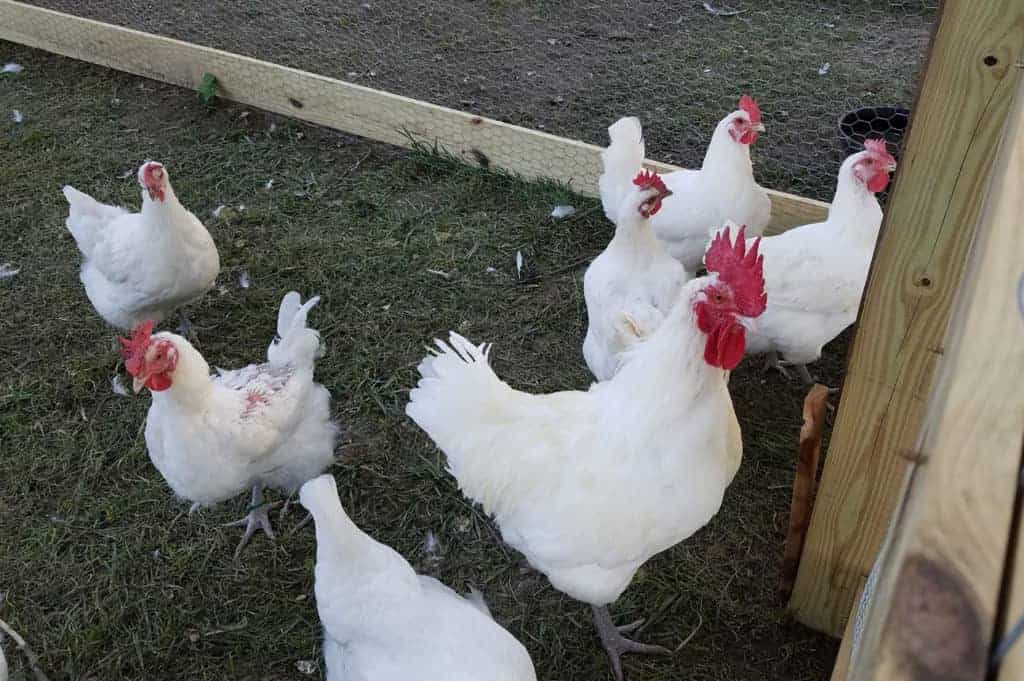
Raising backyard chickens shouldn’t be difficult if you have a detailed plan and you’re following it. This is why it’s crucial to set up properly so that you and your chickens will have a good time.
Shelter
Build your coop in the safest and most convenient place for chickens on your property. Once predators like cats, hawks, foxes, etc., know there are chickens available someplace, they’ll devise all kinds of strategies to come around.
Ensure the walls are strong, and the coop is raised to shock any predator cunny enough to dig a tunnel underneath it. Also, if your birds like to forage a lot, let them do so within protected boundaries. No foraging at the expense of their eggs or lives is worth it.
Feeding
Quality food and water are crucial to the well-being of your backyard chickens, no matter their breed. The diet is usually the same for all chicken breeds, but with slight variation sometimes. You’ve to do your research on the specific nutrients your breed needs and provide them. Also, not every food should find its way into your chickens’ mouths. Also, ensure they’ve always constantly hydrated.
Chicken breed
You should raise dual-purpose chickens so that it’ll be a win-win for you. You can recover the resources you spend on raising them by eating or selling their eggs.
When they can no longer lay eggs, you can turn them into pets or use them as meat. Only dual-purpose chickens are this versatile. If you raise chickens only for egg production, you might not enjoy using them as meat when they’ve passed the point of lay.
Local laws
Before you start homesteading, know what your local laws say about raising backyard chickens. These laws help protect other people in the community from the effects of having a flock on your property.
For instance, if your chickens are naturally noisy or you’ve aggressive roosters in your flock, your neighbors will have a hard time with you, and this might lead to civil offenses. To be on the safe side, know the law and live by it.
Summary
If you’re looking to make your chicken-raising hobby more fun or want tasty meat and healthy eggs, consider raising French chicken breeds. Most times, these birds aren’t common to your locality, so you might have to export them from their places of origin or buy them at big farms. Ensure you know the basic requirements for the breed of your choice before you start homesteading.


Joseph Hudson has been raising chickens for over 15 years. In 2018, he completed the Agriculture & Natural Resources program at Mt. San Antonio College. He currently raises over 1400 chickens on his 7.5-hectare farm. He keeps sharing his experience on raising healthy and happy chickens on Chicken Scratch The Foundry.
